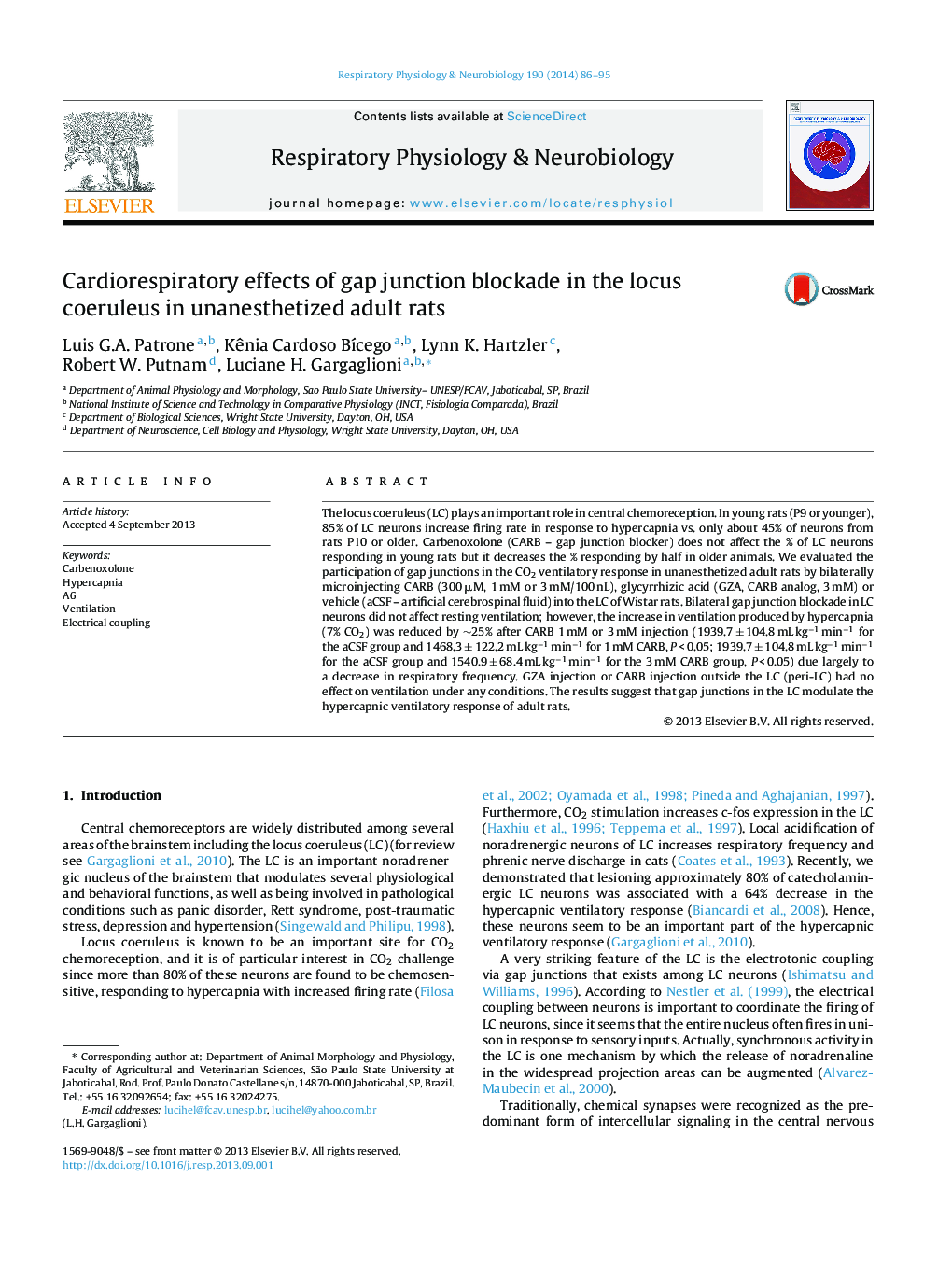| Article ID | Journal | Published Year | Pages | File Type |
|---|---|---|---|---|
| 2847119 | Respiratory Physiology & Neurobiology | 2014 | 10 Pages |
•Locus coeruleus gap junctions are important to CO2 respiratory response.•Gap junction blockade in the locus coeruleus attenuates the hypercapnic ventilatory response.•Electrical synapses in locus coeruleus neurons play a role in the CO2 drive to breathe.
The locus coeruleus (LC) plays an important role in central chemoreception. In young rats (P9 or younger), 85% of LC neurons increase firing rate in response to hypercapnia vs. only about 45% of neurons from rats P10 or older. Carbenoxolone (CARB – gap junction blocker) does not affect the % of LC neurons responding in young rats but it decreases the % responding by half in older animals. We evaluated the participation of gap junctions in the CO2 ventilatory response in unanesthetized adult rats by bilaterally microinjecting CARB (300 μM, 1 mM or 3 mM/100 nL), glycyrrhizic acid (GZA, CARB analog, 3 mM) or vehicle (aCSF – artificial cerebrospinal fluid) into the LC of Wistar rats. Bilateral gap junction blockade in LC neurons did not affect resting ventilation; however, the increase in ventilation produced by hypercapnia (7% CO2) was reduced by ∼25% after CARB 1 mM or 3 mM injection (1939.7 ± 104.8 mL kg−1 min−1 for the aCSF group and 1468.3 ± 122.2 mL kg−1 min−1 for 1 mM CARB, P < 0.05; 1939.7 ± 104.8 mL kg−1 min−1 for the aCSF group and 1540.9 ± 68.4 mL kg−1 min−1 for the 3 mM CARB group, P < 0.05) due largely to a decrease in respiratory frequency. GZA injection or CARB injection outside the LC (peri-LC) had no effect on ventilation under any conditions. The results suggest that gap junctions in the LC modulate the hypercapnic ventilatory response of adult rats.
